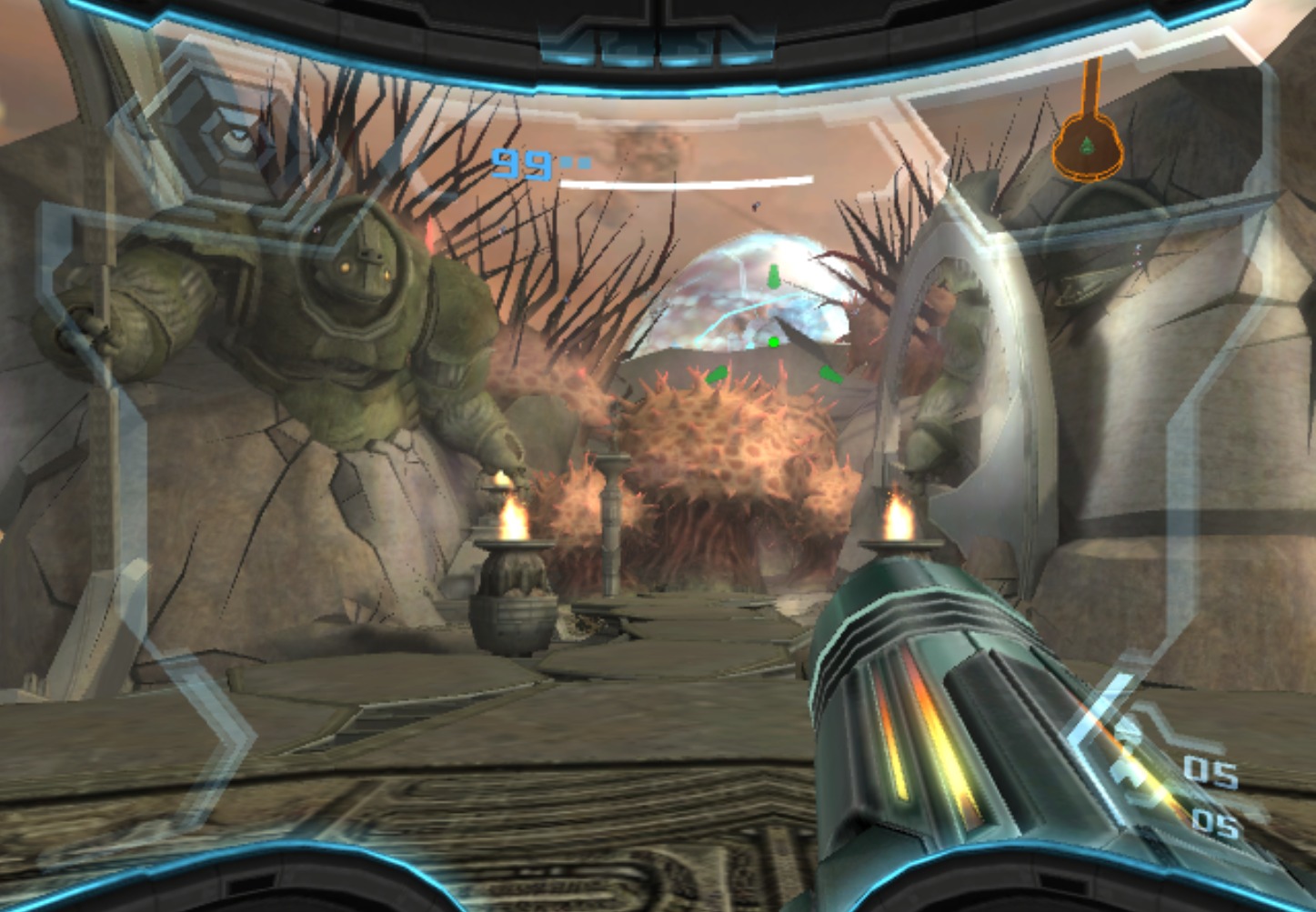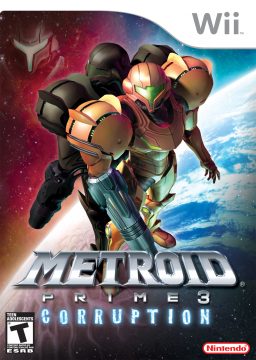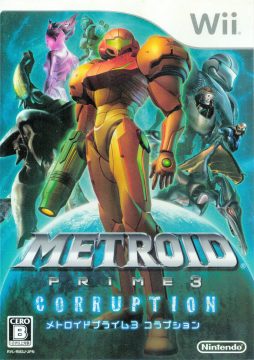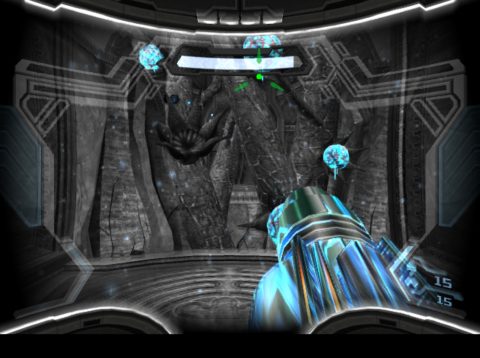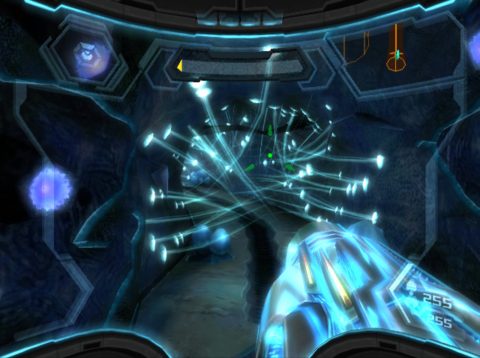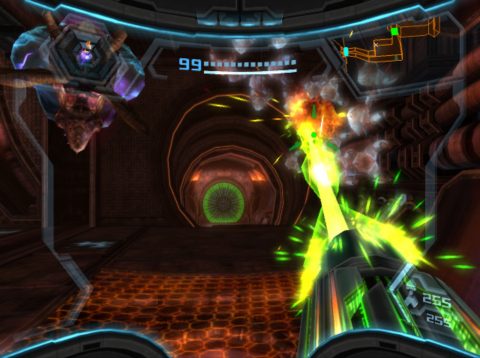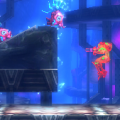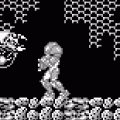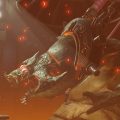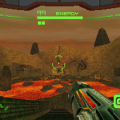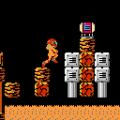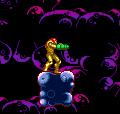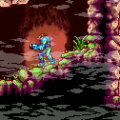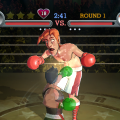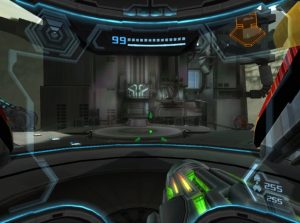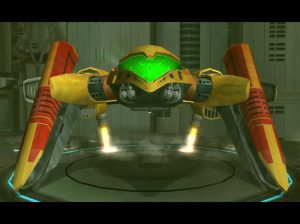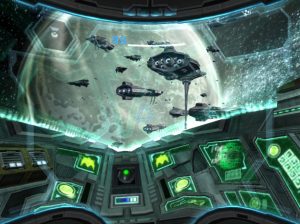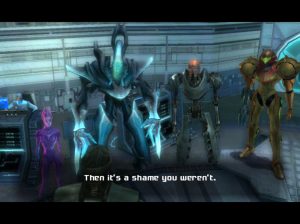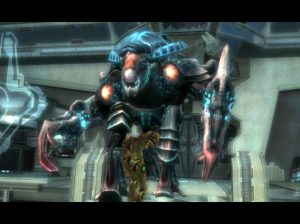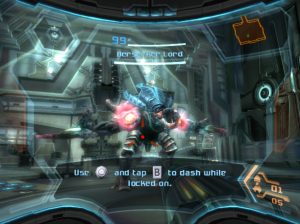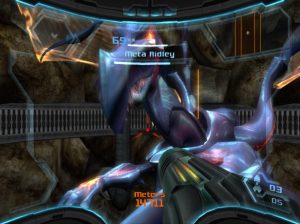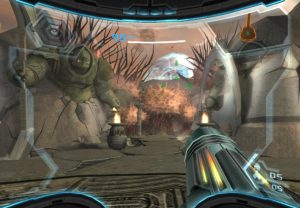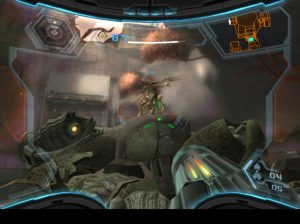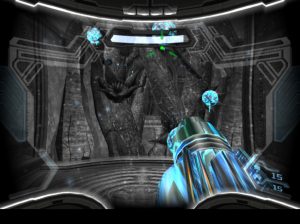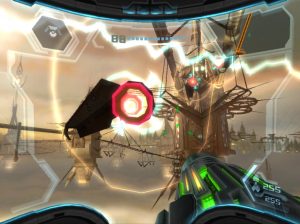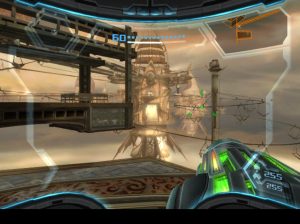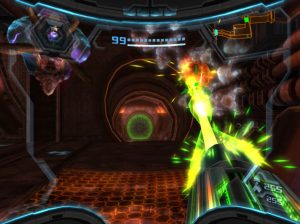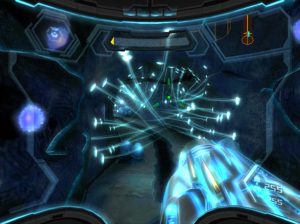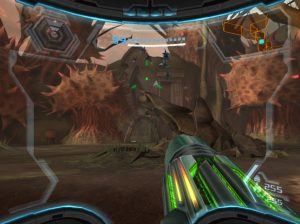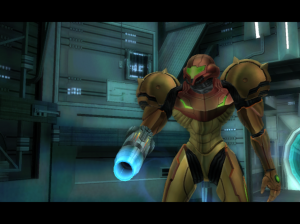The entirety of the Metroid series is covered in HG101 Digest 7: Metroid and Kid Icarus, please check it out!
Metroid Prime 3: Corruption marks the series’ evolution to the Wii, a move which defines its identity in numerous ways. The story begins when Samus is called by the Galactic Federation to defend a base on the planet Norion. She, along with three other bounty hunters, repel the attack, which includes a dramatic battle with Meta Ridley while in freefall. They end up getting ambushed by Dark Samus though, who knocks them all out and infects them with Phazon. The real Samus is unconscious for about a month, after which she awakens to learn that the other hunters have already woken up and were sent on assorted missions, only to have fallen off the radar. It’s up to you to investigate their disappearances and finish the jobs they were supposed to have started.
The adventure takes place over multiple planets this time, each of which have been infected by Phazon attacks in the form of meteor-like rocks called Leviathan Seeds, like Tallon IV from the first Metroid Prime and Aether from the second one. Bryyo condenses many of the types of areas on Tallon IV, including a set of ancient ruins, a jungle, a snow-covered area, and a mining zone filled with fuel gel, basically this game’s equivalent to a lava zone. Elysia has a toxic, gas-filled atmosphere, so the only habitable parts are above the clouds, where several enormous outposts are suspended in the sky. Finally, the Space Pirate Homeworld also contains some facilities on a planet covered in perpetual acid rain. You can move between major points on each planet by flying in Samus’ ship.
While the first two Metroid Prime games had motion controls implemented when they were ported to the Wii, they were initially designed to use the GameCube controller. In contrast, this entry is the only one that was created with the Wii Remote in mind. In addition to controlling more like a typical first-person shooter, there are various motions you need to do when activating switches and the like. You get the Grapple Beam fairly early on, as well as the Grapple Lasso, which lets you grab and rip things from the scenery, as well as disarm shield-wielding foes. This is the first entry in the series where you actually get to sit in the cockpit of Samus’ ship, and you can use the Wii Remote to look around and operate any of the major systems (though it’s still on autopilot so you don’t actually get to fly it). Various enemies can also only be beaten with careful aiming, like drones that attack in a grid formation, and open and close their shutters when they’re vulnerable.
The selectable beams are gone, instead you just get beam upgrades. The Ice Beam is absent too, but you get Ice Missiles with a similar function, like in Metroid Fusion. Instead, you’re equipped with the Phazon Enhancement Device (PED), which lets you use an Energy Tank to send you into Hypermode with a powerful laser weapon. However, the Phazon can overtake you too, requiring you to expel it by shooting as quickly as possible, before Samus becomes completely corrupted. The X-Ray Visor from the first Metroid Prime returns, which is used in conjunction with the new Nova Beam. Additionally, the new Command Visor lets you summon your ship to certain waypoints, which can be used to blow up things or to aid with some puzzles.
With the move to the Wii, the visuals have improved slightly, as many areas now have fuzzy bloom lighting effects. These look nice, but heavily date the game as being from the mid-2000s. The multiplayer mode from Metroid Prime 2 is gone, but there’s now an achievement-like system where you get credits for reaching certain in-game goals. In the Metroid Prime Trilogy, this system was retroactively implemented in the first two Prime games.
Beyond the motion functions, Metroid Prime 3 takes the casual userbase of the Wii into consideration with its design to make it a little more approachable to a wider audience. Perhaps influenced by the popularity of Halo, the Galactic Federation plays a big role in the story, particularly in the beginning. Previously, storytelling in Metroid games was relegated to narrations or internal monologues, but it has a much bigger role here, with quite a bit of voiced dialogue for the first time in the series. It was already a little strange when Samus directly interacted with the friendly Luminoth in Metroid Prime 2, so it’s even more unusual when you can also walk up and talk to various people (most of whom ignore you anyway).
The three bounty hunters who Samus fights alongside in the beginning are also the main bosses through most of the game, since they’ve obviously been corrupted by the Phazon. Ghor has an enormous mechanical suit that dwarfs Samus in size, and is one of the cooler ones, but the others feel out of place here. Gandrayda is a strange-looking shapeshifter that refers to Samus as “Sammy”, while Rundas flies around by creating ice bridges and feels more like something out of X-Men than Metroid. Metroid Prime Hunters already introduced players to the concept of other bounty hunters in the Metroid universe, but at least they were silent. All told, the characterization here just doesn’t feel right.
Perhaps reacting to the sometimes confusing map layouts of the previous two games, Metroid Prime 3 has a much more streamlined design. There’s still quite a bit of exploration, but it’s more guided and linear, especially since the areas are broken up into disparate chunks. The previous games had a hint system that could be disabled, but here, Samus will regularly get communications from the Federation guiding her to her next goal. This was already the direction the design was heading in with Metroid Fusion (and later made even more direct in Other M), but some will probably find themselves annoyed at the hand-holding. The presence of the secondary characters and omniscient guidance sort of ruins the lonely exploration that made earlier entries so compelling, and the discordant areas make exploration feel disjointed.
Still, after the dreary environments of Metroid Prime 2, the planets here are much more visually enthralling. Among the many things the artists at Retro excel at is creating ruins of long-dead alien civilizations, and those locales always have some of the most impressive architecture. However, the standout area of Metroid Prime 3 is SkyTown on Elysia, where you travel between floating outposts in the sky by riding on rails via the Grappling Beam. The same basic idea was used in BioShock Infinite. The final area, the planet Phaaze which is the source of all of the Phazon in the galaxy, also makes for a compelling, creepy, endgame experience, with doors made out of teeth rather than metal.
The end game quest, one of the most contentious points of previous Prime games, has also been scaled back. Here, you need to hunt for batteries in order to power up the space cruiser Valhalla – there are nine in total, but you only need five in order to beat the game, with the rest unlocking assorted bonuses. By making some of them optional, it makes the whole affair less exasperating than before.
Curiously, the Japanese version uses a questionnaire to determine the difficulty level. In general, the standard mode is quite a bit easier than the GameCube versions of the previous titles, and even includes checkpoints, so you don’t need to reload a saved game if you die.
Metroid Prime 3 is a game that lacks confidence in itself, attempting to keep true to its roots while also trying to be the Nintendo counterpart to Halo. It doesn’t come close to ruining the experience, but for longtime fans, it feels like it’s trying to fix something that was never broken. In the end, it still presents a set of entrancing worlds to explore, and it still feels like a Metroid game, albeit a partially compromised one. Alas, this entry effectively brought an end to the Prime series. Phazon was central to all three games, and that arc was finished with this game’s finale, though finding all of the items will show Samus getting chased by Sylux, her main rival from Hunters.
As with its precursors, Metroid Prime 3 was in the Trilogy compilation for Wii, but other than the lack of a proper title screen, it only has some minor tweaks.
